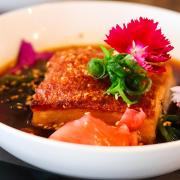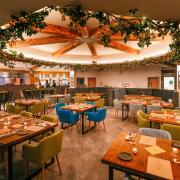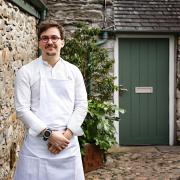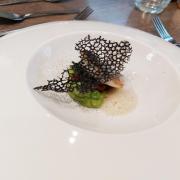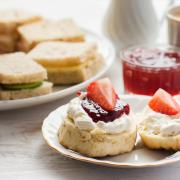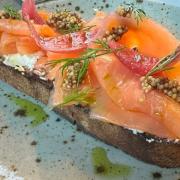In his book Forbidden Lancashire, Graham Spatchcock claims there are more unexplained mysteries in Lancashire than in any other part of the north west, apart from Cheshire and parts of the Wirral.

For example, there have been regular reports of strange lights over Stockport ever since Manchester Airport opened in 1937; a headless horseman is said to haunt the A56 Haslingden bypass; and in recent years there have been countless sightings of legless women in Preston town centre, especially at weekends. Astonishingly, a minicab driver who weighed less than 18 stone was recently spotted in Burnley.
But for many the greatest mystery of all is how the stomach lining of a cow became one of Lancashire’s favourite dishes. I am, of course, talking tripe - and not for the first time, as I’m sure my critics will claim.
Nowadays, it is widely believed that tripe - or Lancashire calamari, as it is known in Lytham - is not fit for human consumption. It’s a far cry from the time when there was a tripe shop on every street corner. Major chains of tripe retailers such as Chorley Co-operative Cattle Products (CCCP) and Tunstall Cow Pieces (TCP) ran a network of tripe shops, cafes and restaurants which employed thousands. Tripe was so popular with our troops that the East Lancashire Fusiliers were issued with a sheet of tripe measuring 8ft x 5ft for emergency rations or a temporary bivouac, although there are some instances of captured German soldiers being force fed tripe to extract important information.
Tripe consumption declined rapidly after the Second World War. With the ending of rationing, the advent of the welfare state and increasing affluence, tripe was up against more palatable foodstuffs. The industry fought back with competitions such as a Win the Weight of Your Baby in Tripe contest in 1956 (this offer was withdrawn when Mrs Jean Dobson submitted an entry for her son, Brian, who weighed in at a healthy 2st 5lb just after birth). Despite this, sales continued to fall and it took the advent of ‘Austerity Britain’ to reverse the trend.
Meat-eaters are looking for cheaper alternatives to steak and nose to tail eating - the consumption of every part of the animal - is increasingly popular. I’ve nothing against this, just so long as the animal is dead or at least comatose.
But there’s another reason why tripe is making a comeback. Under its dynamic Chairman, Sir Norman Wrassle, and thanks to a generous £50 grant from East Lancashire Borough Council, the Tripe Marketing Board has conducted an aggressive campaign using cutting edge marketing techniques such as social networking, cold calling and putting stickers on lamp posts late at night.
Dressed in their distinctive butchers coats and smart white trilbies, the TMB’s Men In White, a team of former male models and butchers, have visited many Lancashire towns asking shoppers if they can tell the difference between a piece of tripe and a warm face flannel. Encouragingly, 25% of those people who took the Tripe Taste Challenge could tell the difference.
There are tentative signs that they are winning the battle. Tripe sales have doubled since 2007 and now exceed an average of 0.25g per person per year (0.01g if Lancashire is excluded) and it is becoming more popular among a younger generation. Unofficial reports suggest tripe is no longer the preserve of the over 85s and that people in their 70s buy it occasionally.
The TMB last year launched Tripe Adviser, the first on-line listing of UK tripe stockists. So why not give tripe a try? You never know, you may even like it! And if you do, make sure it’s Lancashire tripe, the finest tripe in the north west.
Forgotten Lancashire and Parts of Cheshire and the Wirral is by Dr Derek J Ripley. To purchase a copy go to www.forgottenlancashire.co.uk




